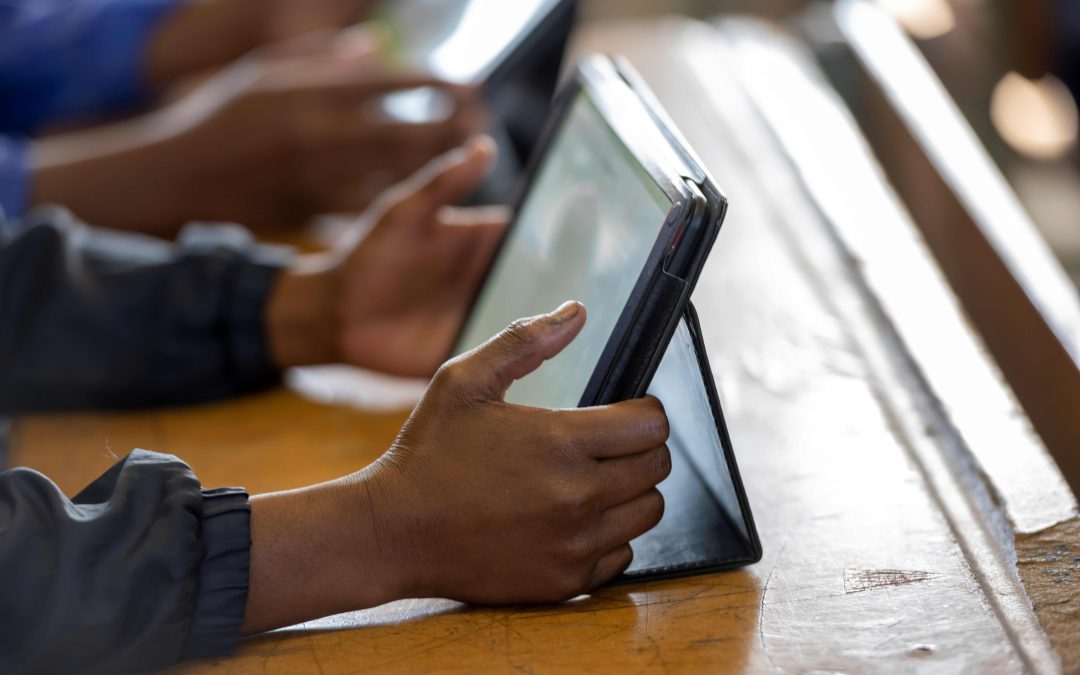The role of Information and Communication Technology (ICT) in education is undeniable, and South Africa has made significant strides in this area. Today, around 80% of government schools have internet access, a crucial step toward digital learning.
While connectivity enables participation in the digital economy and potential for employment, the crucial question remains: how effective is this technology in improving educational outcomes?
Recognising education as one of the pillars for tackling the triple challenge of inequality, unemployment and poverty, as well as for sustainable development, Anglo American, in partnership with the Department of Basic Education, launched an Education Programme in 2018. “Our commitment to supporting whole school development in mining host communities, is a testament to our belief in the transformative power of education that fosters a brighter future for the next generation. By integrating ICT and digital technology into our education programme, we aim to leapfrog traditional barriers and equip learners and educators with the tools they need to succeed in the 21st century,” said Vanessa Naicker, Head of Social Impact at Anglo American.
The Anglo American South Africa (AASA) Education Programme has invested over R800 million to improve educational outcomes for learners, supporting 227 schools and 200 Early Childhood Development (ECD) centres in their host communities, reaching around 185,000 learners and 4,000 teachers.
Part of the programme aims to facilitate internet connection in schools. “Through our connectivity initiative, we are creating an educational ecosystem that promotes quality of teaching and digital learning in our host communities,” says Nasreen Sain, Education ICT Programme Manager at Anglo American.
The programme’s comprehensive approach focuses on functional school leadership, ICT integration, direct teacher support, learner development and community involvement. The ICT initiative was rolled out as an enabler to the broader AASA Education Programme three years ago, and includes the installation of technology infrastructure, devices, providing ICT courses and training to improve digital literacy and skills, a student engagement platform to support primary and secondary learners, and ongoing support to ensure sustainability of the initiative.
Connectivity, implemented in partnership with the Impact Catalyst, lies at the heart of the programme, facilitating the integration of technology into classrooms and enabling various educational interventions.
The investment goes beyond mere hardware provision. Anglo American has committed substantial capital expenditure, along with three years of ongoing operational funding to ensure connectivity remains functional while teachers and learners incorporate technology into daily classroom practices.
Participating schools saw their matric pass rate increase by 6.5% in 2024 (from 79% in 2023 to 85.5% in 2024) across Phase 1 and 2 of the Education Programme. Even more impressive, bachelor pass rates surged by 10.5% (from 33.1% to 43.6%), while mathematics pass rates improved by 9.5% (from 58% to 67.5%) in Phase 2 schools.
“The impressive improvements in matric results demonstrate that when schools have reliable internet access integrated with proper teacher support, we can truly transform learning outcomes in traditionally underserved communities,” says Sain.
Tidimane Secondary School in the North West provides a striking success story. By leveraging Wi-Fi connectivity for their matric mathematics and science students, the school’s mathematics pass rate jumped from 40% in 2023 to 73% in 2024.
“The connectivity and ICT training has been extremely beneficial to both our learners and teachers,” reports Letsatsi Betha Mmaphefo, Deputy Principal at Tidimane. “Our matriculants in particular, found it invaluable during their studies in 2024. The integration of technology by our teachers has enhanced their teaching methods and the learning experience.”
The initiative’s success stems from its collaborative approach. This model aims to addresses a critical concern: sustainability. By implementing a robust digital education system that supports continuity and scalability across Limpopo, North West, Northern Cape, and Mpumalanga, the programme aims to ensure long-term impact through collaborative regional development.
The successes of the programme have not been without challenges. Load shedding and power outages significantly impacted our ability to provide and monitor services, affecting both telecommunications infrastructure and school installations. Additionally, the lack of investment in core infrastructure like Fibre and Microwave in certain areas necessitated the use of satellite solutions, which, while essential, do not match the performance of Fibre and Microwave.
Despite these challenges, we remain committed to leveraging this investment to new heights and are open to collaboration to enhance the sustainability and impact of our school connectivity project.


